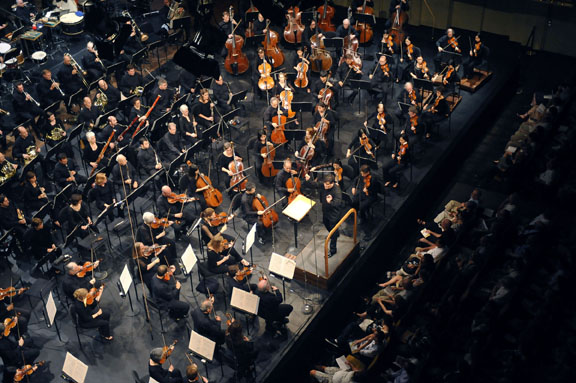Mahler Symphony No. 6 – New York Philharmonic Review
New York Philharmonic Alan Gilbert, conductor Avery Fisher Hall, New Yrok, NY October 1, 2010In 2009, the New York Philharmonic, America’s oldest orchestra, departed from its longtime tradition of engaging venerable European Music Directors, and appointed 42-year-old Alan Gilbert, the first native New Yorker to hold the post. Though he had established himself in previous appearances, his comparative youth seemed to cause some misgivings, which were dispelled by his very successful inaugural season. Now his performance of Mahler’s Sixth Symphony has convinced all who heard it that New York City has set its own homegrown star on the musical firmament.
Comparisons are notoriously odious, but it was impossible to avoid contrasting, even unconsciously, Gilbert’s approach with that of the two conductors of the Vienna Philharmonic, on display the same week. The period-style-influenced Harnoncourt seemed intent on proving a scholarly point, the charismatic Dudamel on proving himself; Gilbert was intent on serving the music and communicating his love for it.
Watching him conduct is a pleasure. He never exaggerates or calls attention to himself, making his gestures fit the music without acting it out, and, however exciting or emotional the moment may be, his beat remains perfectly clear. Conducting mostly from memory, he knows the music down to the smallest detail, and responds to it with total involvement.
An articulate speaker and writer, Gilbert has sometimes addressed the audience before a concert to introduce the music to be performed; this time, he discussed it in the printed program, focusing on the conductor’s responsibility to make interpretive choices and decisions.
Mahler’s Sixth Symphony is beset by uncertainties. He kept changing his mind about the order of the two middle movements, and about the number of hammer-strokes in the Finale. Supposedly intended to represent the blows of Fate, Mahler originally wrote three, then eliminated the third as too final; conductors have made their own decisions ever since. For reasons explained in his essay, Gilbert opted to place the slow movement second, the Scherzo third, and to include the third hammer stroke.
But there are choices to be made in all Mahler symphonies, which, though less obvious to the listener, are no less crucial to the interpretation. Mahler was a superb contrapuntalist and orchestrator; he wove a dense, complex texture of many independently moving lines and voices. They all seem equally important in theory, but in practice, it is obviously impossible to make them all equally prominent; conductors constantly have to decide which should be highlighted. This is one reason why a familiar symphony can sound almost like a new piece in a different conductor’s hands: one hears lines that one never heard before.
Gilbert again demonstrated his proven ability to make the densest scores transparent, bringing out many usually obscured lines without entirely suppressing the rest. Surprisingly, one significant detail got lost: the changes from major to minor that magically turn sunlight into darkness.
Mahler often changes color by distributing melodic lines between different instruments; connecting them without interrupting their continuity creates another challenge for conductors and orchestras. The Philharmonic musicians handled it admirably: their take-overs were totally imperceptible, and all the solos were marvelous. Altogether, the orchestra has never sounded better or more inside the music; the audience was drawn in from first note to last. But the performance was Alan Gilbert’s triumph: having made all the right choices, he paid meticulous attention to every detail, yet sustained his grasp of the whole, infinitely complex work, its manifold mood and character-changes, and its towering climaxes – a truly impressive achievement.

